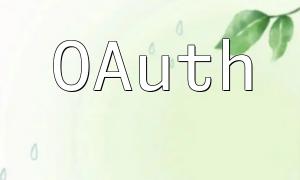With the rapid advancement of internet technology, APIs (Application Programming Interfaces) have become a key tool for communication between applications. Whether it's retrieving data, updating information, or handling user requests, APIs play a crucial role. This article will teach you how to call API interfaces in PHP using cURL and file_get_contents, two common methods for making simple and effective API requests.
APIs are interfaces that allow different software systems to communicate. They define how to make data requests and handle responses using HTTP methods like GET, POST, PUT, and DELETE. Understanding these basic operations is the first step to calling APIs. PHP offers various methods to interact with APIs, with cURL being the most commonly used tool.
cURL is a powerful tool for handling HTTP requests in PHP. It supports multiple protocols and is ideal for complex API interactions. Here's a simple example demonstrating how to use cURL to send a GET request:
<?php
// Create a cURL handle
$ch = curl_init();
// Set the request URL
curl_setopt($ch, CURLOPT_URL, "http://api.example.com/users");
// Set the request method to GET
curl_setopt($ch, CURLOPT_HTTPGET, true);
// Execute the request and get the response data
$response = curl_exec($ch);
// Check for errors
if(curl_errno($ch)) {
echo 'Error: ' . curl_error($ch);
}
// Close the cURL handle
curl_close($ch);
// Process the response data
$data = json_decode($response, true);
echo "Total users: " . count($data);
?>
In this example, we create a cURL handle with curl_init(), then use curl_setopt() to configure the request URL and HTTP method. We execute the request with curl_exec() and check for errors using curl_errno(). Finally, we use json_decode() to parse the response and process the data.
In addition to cURL, PHP also provides the file_get_contents() function for sending HTTP requests. While not as powerful as cURL, it is sufficient for simple API calls. Here's an example of how to use file_get_contents to send a GET request:
<?php // Set the request URL $url = "http://api.example.com/users"; // Send the HTTP request and get the response data $response = file_get_contents($url); // Process the response data $data = json_decode($response, true); echo "Total users: " . count($data); ?>
In this example, we send a GET request using file_get_contents() and store the response data in the $response variable. We then use json_decode() to parse the response and output the result.
Once you have learned these basic methods and techniques, you'll be able to efficiently call API interfaces in PHP. Whether you're retrieving, creating, or updating data, these HTTP request configurations will help you interact with APIs. We hope the examples and tips in this article will help you better understand and use APIs.
Related Tags:
API








